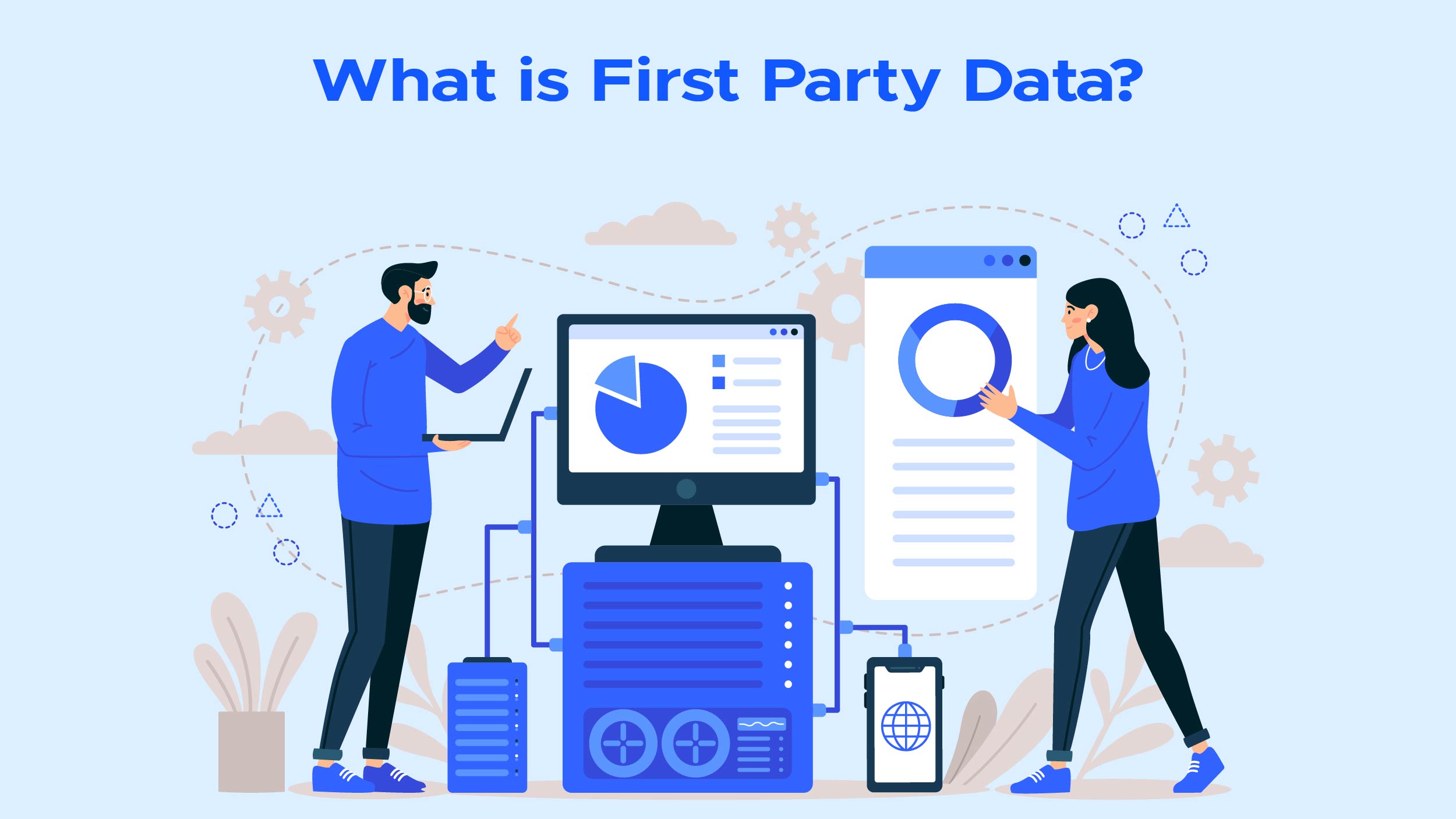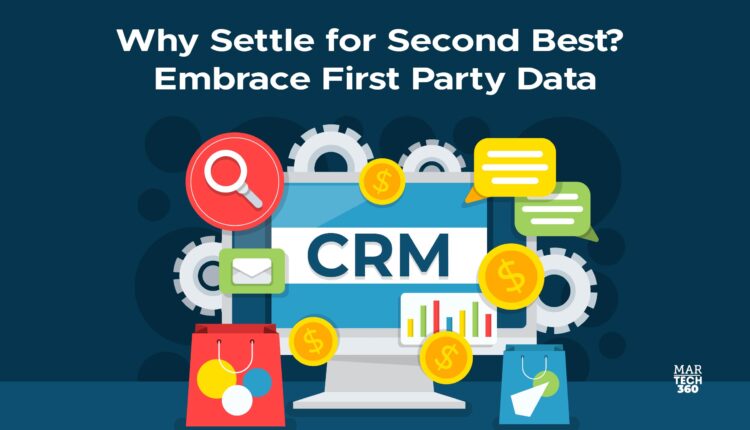There’s this hot topic in the business world right now – ‘First party data’. It’s become a big deal since data privacy rules came into play worldwide. Basically, it’s all about getting info about your customers straight from the source.
Now, how well a company uses this first-party data depends on its marketing team.
Let’s break it down, step by step. We’ll cover everything from first party data definition to first party data strategy. Think of it as your cheat sheet for the cookieless era, which will help you personalize experiences for your users and potential customers!
What is First Party Data?
 First-party data refers to customer information that is gathered directly by your organization. This encompasses activities such as website visits, purchases, or interactions with customer service. This data is owned by your company and serves as a dependable resource for understanding customer behavior and preferences.
First-party data refers to customer information that is gathered directly by your organization. This encompasses activities such as website visits, purchases, or interactions with customer service. This data is owned by your company and serves as a dependable resource for understanding customer behavior and preferences.
In 2020, Google collaborated with the Boston Consulting Group (BCG) to investigate the effectiveness of first party data strategies for brands. The study revealed that businesses utilizing first-party data for important marketing activities experienced a significant boost in revenue, with an uplift of up to 2.9 times, as well as cost savings that increased by 1.5 times.
First Party Data vs. Zero Party Data
Zero-party data is voluntarily disclosed by customers through surveys, questionnaires, feedback forms, and similar means, whereas first-party data is obtained from customer actions and behaviors.
The crucial difference lies in how users are engaged. First-party data is gathered through observing user actions, while zero-party data is obtained directly from users who willingly share information.
First Party Data vs Third Party Data
External entities gather data from second and third parties.
Certain popular internet browsers, such as Chrome, Firefox, and Safari, use third-party cookies to track online activities and show personalized ads. This data is collected by external entities. Nevertheless, in recent times, these browsers have started to eliminate the use of third-party cookies in order to safeguard their users’ privacy and provide enhanced browsing security.
As the cookiepocolypse looms, it is imperative for companies to give precedence to zero- and first-party data. Utilizing information voluntarily shared by customers holds a higher ethical standing compared to acquiring data without their consent.
First-party data refers to the information that is gathered from your audience through the digital channels you own. This type of data is considered reliable and free from problems because individuals have given their consent for you to use their data in order to establish communication and interact with them.
Also Read: Lost in Data Translation? Explore the World of Identity Resolution!
Benefits of Implementing First Party Data Strategy
 First-party data, which exclusively belongs to you, provides valuable insights into your audience. As a result, it offers numerous advantages, such as:
First-party data, which exclusively belongs to you, provides valuable insights into your audience. As a result, it offers numerous advantages, such as:
- Customization and fusion
- Pinpointing the ideal audience
- Precision and authority
- Foster stronger client bonds
- Adherence to privacy regulations
- Transparency
- Reduced expenses
Additionally, by keeping this information within your organization, you maintain a strategic advantage over your competitors. They will not have access to the reasons behind your marketing strategies and experimental approaches. In the past, these insights could be obtained by anyone through external sources, but now, it is only you who possesses knowledge about your customers’ preferences and behaviors.
The Collection of First Party Data: How Does It Work?
There are numerous methods available for gathering first-party data.
To effectively monitor user behavior on your website or app, as well as their engagement on social media platforms, you can implement a pixel or employ a tracking tool like CrazyEgg. This method allows for the tracking of various user actions and activities, including the pages they visit, their interactions, and their areas of interest, such as the specific blogs they read. Moreover, you can obtain additional information such as IP addresses, preferred language, timestamps, and the URLs they have accessed.
Feed this info into your customer relationship management (CRM) platform to create a database of your site visitors. This helps build user profiles for targeted content. Consider when to collect first-party data in the customer journey, e.g., subscriptions for awareness, webinars for interest, and purchase behavior for insights.
First Party Data: A Must-Have in Your Arsenal
With the introduction of data privacy updates, such as Apple’s iOS14+, user data collection previously relied on third-party browser cookies and pixels on advertising platforms like Google and Meta. However, as a result of these updates, both Google and Meta experienced a loss of audience insights due to the unavailability of user data access.
Currently, due to limitations on third-party cookie tracking and the implementation of Apple’s App Tracking Transparency framework, ad platforms are facing challenges in efficiently gathering and storing data for running advertising campaigns. As a result, the performance of ad campaigns has declined unexpectedly, causing concern among marketers.
Now’s the crucial moment to grasp the significance of first-party data and kickstart your collection efforts. Once you gather this data and integrate it with platforms like Google and Facebook, you’ll significantly reduce audience signal loss, resulting in high-performing ad campaigns.
As Google emphasizes, utilize audience signals from your first-party data to reach similar audiences and optimize your ad campaigns effectively.
The Next Chapter for Marketers and First Party Data
As Google phases out third-party cookies in 2023, it’s imperative to swiftly strategize your first-party data approach for bolstering online revenue.
Seamless integration is pivotal, enabling the collection of customer data for personalized targeting. Exploring zero-party data, which is voluntarily shared by customers, is also crucial.
Today’s marketers must enhance customer experience through deeper customer insights, and first party data marketing may hold the key to achieving this goal.


Comments are closed.